-
 Bitcoin
Bitcoin $118400
0.47% -
 Ethereum
Ethereum $3836
2.20% -
 XRP
XRP $3.157
2.98% -
 Tether USDt
Tether USDt $0.9999
-0.03% -
 BNB
BNB $801.5
1.31% -
 Solana
Solana $180.9
2.07% -
 USDC
USDC $0.9999
-0.02% -
 Dogecoin
Dogecoin $0.2225
2.50% -
 TRON
TRON $0.3285
-1.02% -
 Cardano
Cardano $0.7789
2.60% -
 Hyperliquid
Hyperliquid $43.60
2.39% -
 Sui
Sui $3.892
4.41% -
 Stellar
Stellar $0.4229
3.34% -
 Chainlink
Chainlink $18.01
3.98% -
 Hedera
Hedera $0.2745
6.77% -
 Bitcoin Cash
Bitcoin Cash $582.3
3.38% -
 Avalanche
Avalanche $23.77
1.04% -
 Ethena USDe
Ethena USDe $1.001
0.01% -
 Toncoin
Toncoin $3.493
3.59% -
 Litecoin
Litecoin $110.0
2.48% -
 UNUS SED LEO
UNUS SED LEO $8.936
-0.37% -
 Shiba Inu
Shiba Inu $0.00001304
2.49% -
 Uniswap
Uniswap $9.999
1.09% -
 Polkadot
Polkadot $3.897
3.26% -
 Monero
Monero $308.6
-0.83% -
 Dai
Dai $0.9999
-0.01% -
 Bitget Token
Bitget Token $4.504
-0.04% -
 Pepe
Pepe $0.00001154
2.95% -
 Cronos
Cronos $0.1471
3.06% -
 Ethena
Ethena $0.6691
19.53%
Is it credible for the KDJ fast line to break through the 80 line in the bear market rebound?
When the KDJ fast line breaks above 80 in a bear market, it may signal a temporary rebound, but confirmation from volume, price structure, and other indicators is crucial to avoid false signals.
Jul 29, 2025 at 06:22 pm
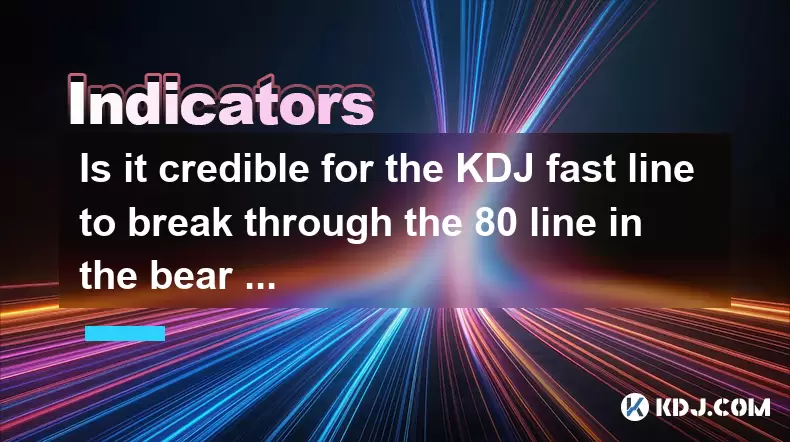
Understanding the KDJ Indicator in Cryptocurrency Trading
The KDJ indicator is a momentum oscillator widely used in technical analysis within the cryptocurrency market. It comprises three lines: the %K (fast line), %D (slow line), and %J (divergence line). The fast line (%K) reflects the current price momentum relative to recent price ranges over a specified period, typically 9 days. When the KDJ fast line breaks through the 80 level, it traditionally signals that an asset may be entering overbought territory. In a neutral or bullish market, this could suggest a potential pullback or consolidation. However, interpreting this signal during a bear market rebound requires deeper contextual analysis.
Cryptocurrency markets are inherently volatile, and bear markets often feature sharp, short-term rallies amid prolonged downtrends. These rebounds can trigger technical signals that appear bullish but may not indicate a sustained trend reversal. Therefore, relying solely on the KDJ fast line crossing above 80 during such periods can be misleading without additional confirmation.
What Does the 80 Line Represent in the KDJ?
The 80 line in the KDJ indicator serves as a threshold for overbought conditions. When the fast line (%K) rises above 80, it suggests that buying pressure has pushed the price to the upper end of its recent range. In a typical setup, traders may interpret this as a warning sign to prepare for a correction. However, during a bear market rebound, this signal may reflect short-covering or speculative momentum rather than genuine accumulation.
It’s crucial to recognize that the KDJ is a relative measure. It compares the current closing price to the high-low range over the past N periods. A break above 80 does not inherently mean the rally is unsustainable—it only indicates strong upward momentum in the short term. In a downtrend, such momentum can be temporary, driven by fear of missing out (FOMO) or coordinated pump attempts.
Behavior of KDJ During Bear Market Rebounds
During a bear market, price action is dominated by selling pressure, but periodic rebounds are common. These rallies often occur after extreme oversold conditions, where the KDJ fast line may have previously dropped below 20 (oversold). When the fast line recovers and breaks above 80, it can appear as a powerful bullish signal. However, historical data from major cryptocurrencies like Bitcoin and Ethereum shows that such breakouts frequently occur in countertrend moves.
For example, during the 2022 bear market, Bitcoin experienced multiple rallies where the KDJ fast line surged past 80, only to resume its downward trajectory shortly after. These instances highlight that a fast line breakout above 80 in a bear market does not guarantee continuation of the rally. Instead, it may signal exhaustion of the rebound, especially if volume is declining or if the price fails to close above key resistance levels.
Traders should assess whether the breakout coincides with other confirming factors such as increased trading volume, positive macro developments, or breakouts from descending trendlines. Without such alignment, the signal may lack credibility.
How to Validate the KDJ Fast Line Breakout
To determine whether a KDJ fast line break above 80 is credible during a bear market rebound, traders should follow a multi-layered validation process:
Check the alignment with price structure: Confirm whether the price has broken above a significant resistance level or is still confined within a descending channel. A breakout above structure adds weight to the signal.
Analyze volume trends: Use on-chain or exchange volume data to see if the rally is supported by increasing participation. Sustained high volume during the breakout increases the likelihood of a genuine move.
Cross-verify with other indicators: Combine KDJ with tools like RSI, MACD, or moving averages. If RSI also enters overbought territory and MACD shows bullish crossover, the signal gains strength.
Monitor the %D and %J lines: If the %D line (slow line) follows the fast line above 80 and the %J line remains elevated, it suggests momentum is sustained. A quick divergence between %K and %D may indicate weakness.
Observe candlestick patterns: Look for bullish engulfing, hammer, or piercing line patterns at key support zones that align with the KDJ signal.
This comprehensive approach reduces the risk of false signals and improves decision-making accuracy.
Practical Example: Applying KDJ Analysis on a Crypto Chart
Suppose you are analyzing Ethereum (ETH/USDT) on a daily chart during a bear market. You notice the KDJ fast line has just crossed above 80 after rising from below 20. To assess credibility:
- Open your trading platform (e.g., TradingView).
- Apply the KDJ indicator with default settings (9,3,3).
- Observe the price action: Is ETH trading above the 50-day moving average? Is it challenging a major resistance level like $1,800?
- Check the volume: Was the upward move accompanied by a spike in volume on Binance or Coinbase?
- Compare with RSI: Is RSI above 60 and rising, or is it showing divergence?
- Look at the slow line (%D): Has it also moved above 70? Is the %J line above 100?
If most of these conditions are met, the KDJ breakout may carry more weight. If not, treat it as a potential trap. Always set stop-loss orders when acting on such signals, especially in volatile bear markets.
Common Misinterpretations of KDJ Signals
Many traders misinterpret the KDJ fast line crossing 80 as a definitive sell signal, especially in bear markets. However, this can lead to premature exits during strong counter-trend rallies. Conversely, some may view it as a buy signal, ignoring the broader downtrend. Both extremes are risky.
Another pitfall is ignoring timeframes. A 4-hour chart showing a fast line above 80 may reflect short-term overbought conditions, while the daily chart remains deeply bearish. Always analyze multiple timeframes to avoid noise.
Additionally, not adjusting KDJ parameters for different assets can lead to inaccurate readings. For highly volatile altcoins, using a longer period (e.g., 14,3,3) may smooth out false signals.
Frequently Asked Questions
Can the KDJ fast line stay above 80 for multiple days in a bear market?
Yes, it can. Extended time above 80 indicates persistent short-term bullish momentum, often seen during strong rebounds. However, this does not negate the bearish trend. The key is whether price action confirms a structural shift.
Does the KDJ work the same across all cryptocurrencies?
No. The effectiveness varies based on liquidity and volatility. Major coins like Bitcoin tend to generate more reliable KDJ signals due to higher trading volume. Low-cap altcoins may produce erratic readings due to manipulation or thin order books.
Should I use KDJ alone to make trading decisions?
No single indicator should be used in isolation. The KDJ is most effective when combined with price action, volume, and other technical tools. Relying solely on KDJ increases the risk of false signals, especially in trending markets.
How do I adjust KDJ settings for better accuracy in bear markets?
Consider increasing the %K period from 9 to 14 or 21 to reduce sensitivity. This helps filter out noise during volatile rebounds. Also, monitor divergence between price and KDJ—hidden bullish divergence during rebounds can signal stronger momentum.
Disclaimer:info@kdj.com
The information provided is not trading advice. kdj.com does not assume any responsibility for any investments made based on the information provided in this article. Cryptocurrencies are highly volatile and it is highly recommended that you invest with caution after thorough research!
If you believe that the content used on this website infringes your copyright, please contact us immediately (info@kdj.com) and we will delete it promptly.
- Pudgy Penguins Price Prediction: Buying Opportunity or Insider Dump?
- 2025-07-31 18:50:35
- Penny Coin Power: Unearthing 20x Potential in Undervalued Crypto
- 2025-07-31 20:10:14
- Shrapnel, GalaChain, and China Gaming: A New Frontier
- 2025-07-31 19:10:35
- Mutuum Finance, Bitcoin, and Market Analysis: Decoding the Latest Trends
- 2025-07-31 19:30:13
- Dogecoin Howl: Bullish Signals and Analyst Bites – Is the Meme Coin Ready to Pounce?
- 2025-07-31 18:30:16
- Decoding Crypto Presales, Ethereum's Role, and Navigating a Tricky Altcoin Season
- 2025-07-31 18:30:16
Related knowledge
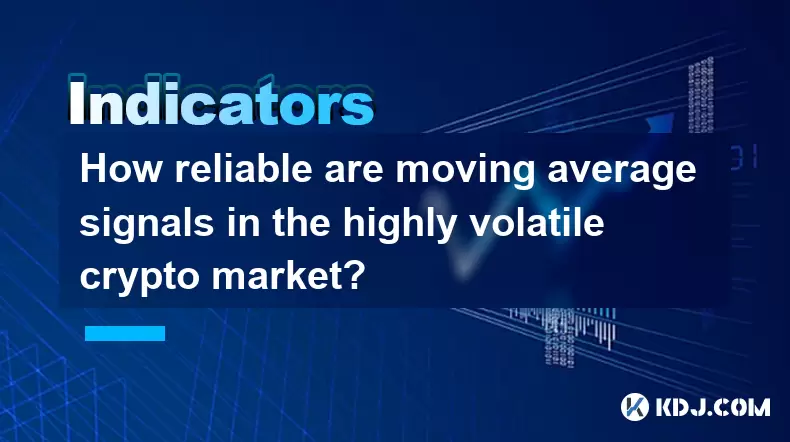
How reliable are moving average signals in the highly volatile crypto market?
Jul 31,2025 at 08:36pm
Understanding Moving Averages in Cryptocurrency TradingMoving averages (MAs) are among the most widely used technical indicators in the cryptocurrency...
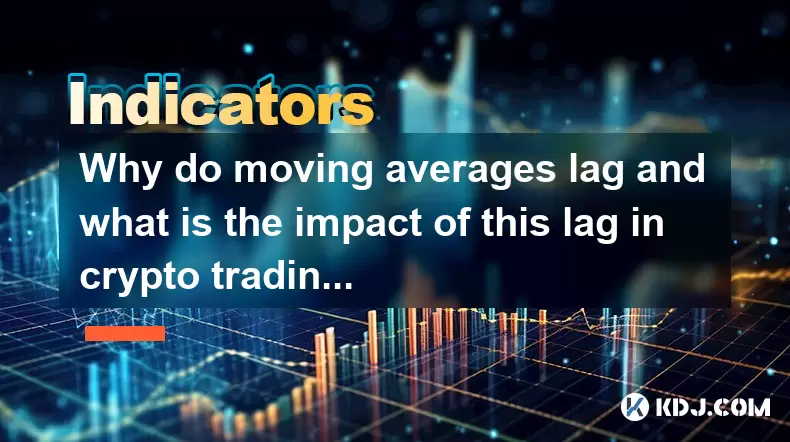
Why do moving averages lag and what is the impact of this lag in crypto trading?
Jul 31,2025 at 08:07pm
Understanding the Concept of Moving Averages in Crypto TradingMoving averages are among the most widely used technical indicators in cryptocurrency tr...
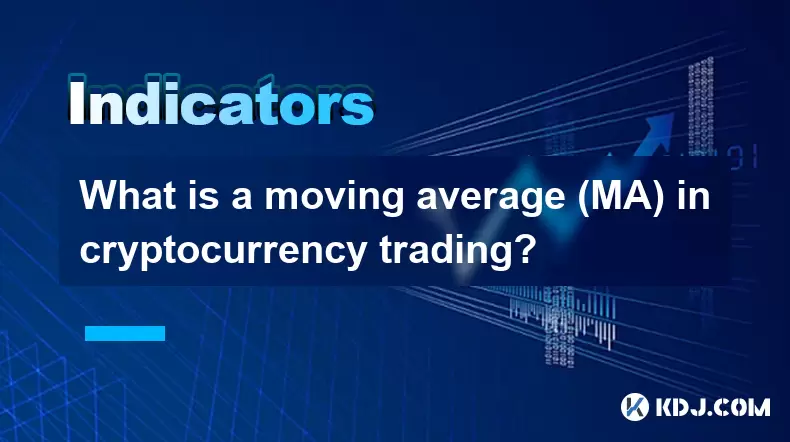
What is a moving average (MA) in cryptocurrency trading?
Jul 31,2025 at 06:30pm
Understanding the Concept of Moving Average (MA)A moving average (MA) is a widely used technical analysis tool in cryptocurrency trading that helps sm...
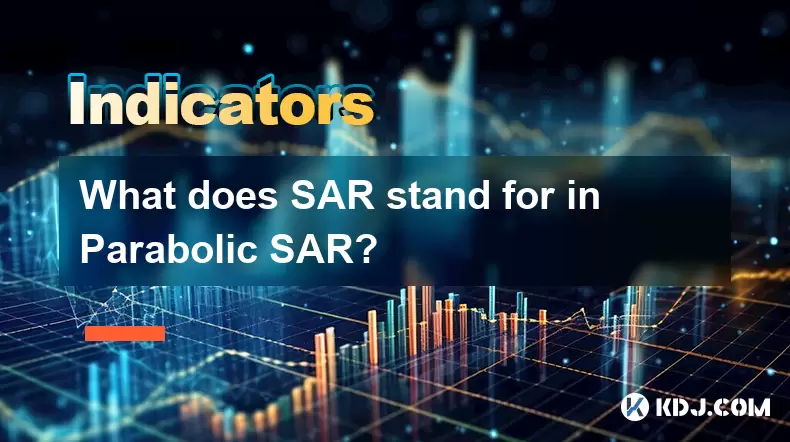
What does SAR stand for in Parabolic SAR?
Jul 31,2025 at 06:49pm
Understanding the Meaning of SAR in Parabolic SARIn the context of technical analysis in the cryptocurrency market, SAR stands for 'Stop and Reverse' ...
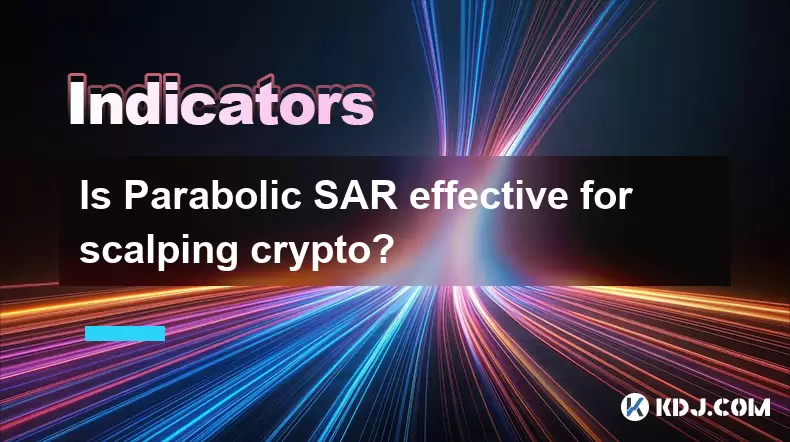
Is Parabolic SAR effective for scalping crypto?
Jul 31,2025 at 08:29pm
Understanding Parabolic SAR in Cryptocurrency TradingThe Parabolic SAR (Stop and Reverse) is a technical indicator developed by J. Welles Wilder, prim...
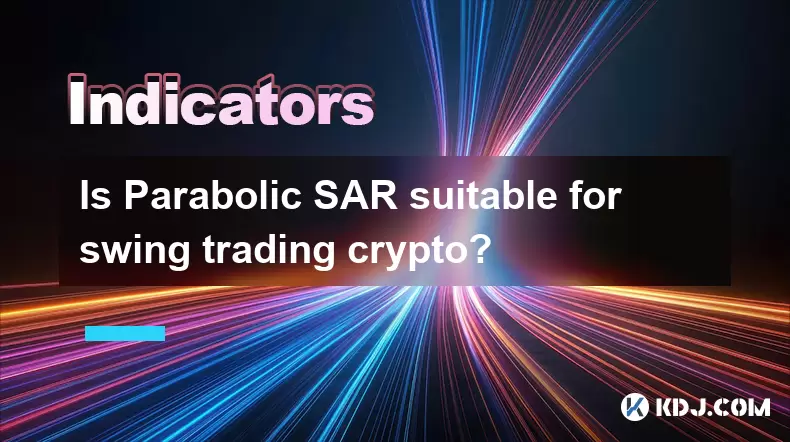
Is Parabolic SAR suitable for swing trading crypto?
Jul 31,2025 at 05:29pm
Understanding Parabolic SAR in Cryptocurrency TradingThe Parabolic SAR (Stop and Reverse) is a technical indicator developed by J. Welles Wilder that ...

How reliable are moving average signals in the highly volatile crypto market?
Jul 31,2025 at 08:36pm
Understanding Moving Averages in Cryptocurrency TradingMoving averages (MAs) are among the most widely used technical indicators in the cryptocurrency...

Why do moving averages lag and what is the impact of this lag in crypto trading?
Jul 31,2025 at 08:07pm
Understanding the Concept of Moving Averages in Crypto TradingMoving averages are among the most widely used technical indicators in cryptocurrency tr...

What is a moving average (MA) in cryptocurrency trading?
Jul 31,2025 at 06:30pm
Understanding the Concept of Moving Average (MA)A moving average (MA) is a widely used technical analysis tool in cryptocurrency trading that helps sm...

What does SAR stand for in Parabolic SAR?
Jul 31,2025 at 06:49pm
Understanding the Meaning of SAR in Parabolic SARIn the context of technical analysis in the cryptocurrency market, SAR stands for 'Stop and Reverse' ...

Is Parabolic SAR effective for scalping crypto?
Jul 31,2025 at 08:29pm
Understanding Parabolic SAR in Cryptocurrency TradingThe Parabolic SAR (Stop and Reverse) is a technical indicator developed by J. Welles Wilder, prim...

Is Parabolic SAR suitable for swing trading crypto?
Jul 31,2025 at 05:29pm
Understanding Parabolic SAR in Cryptocurrency TradingThe Parabolic SAR (Stop and Reverse) is a technical indicator developed by J. Welles Wilder that ...
See all articles

























































































